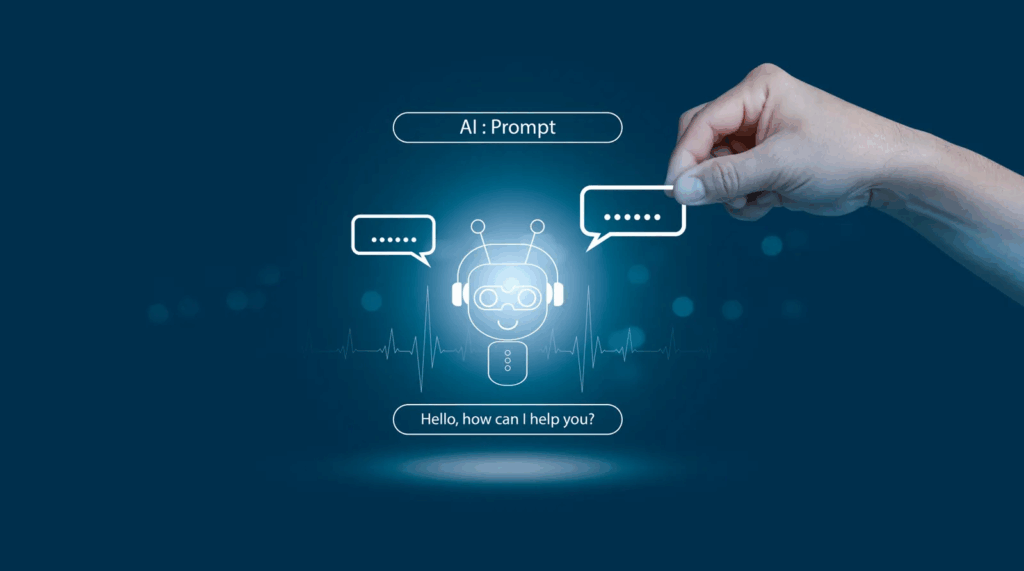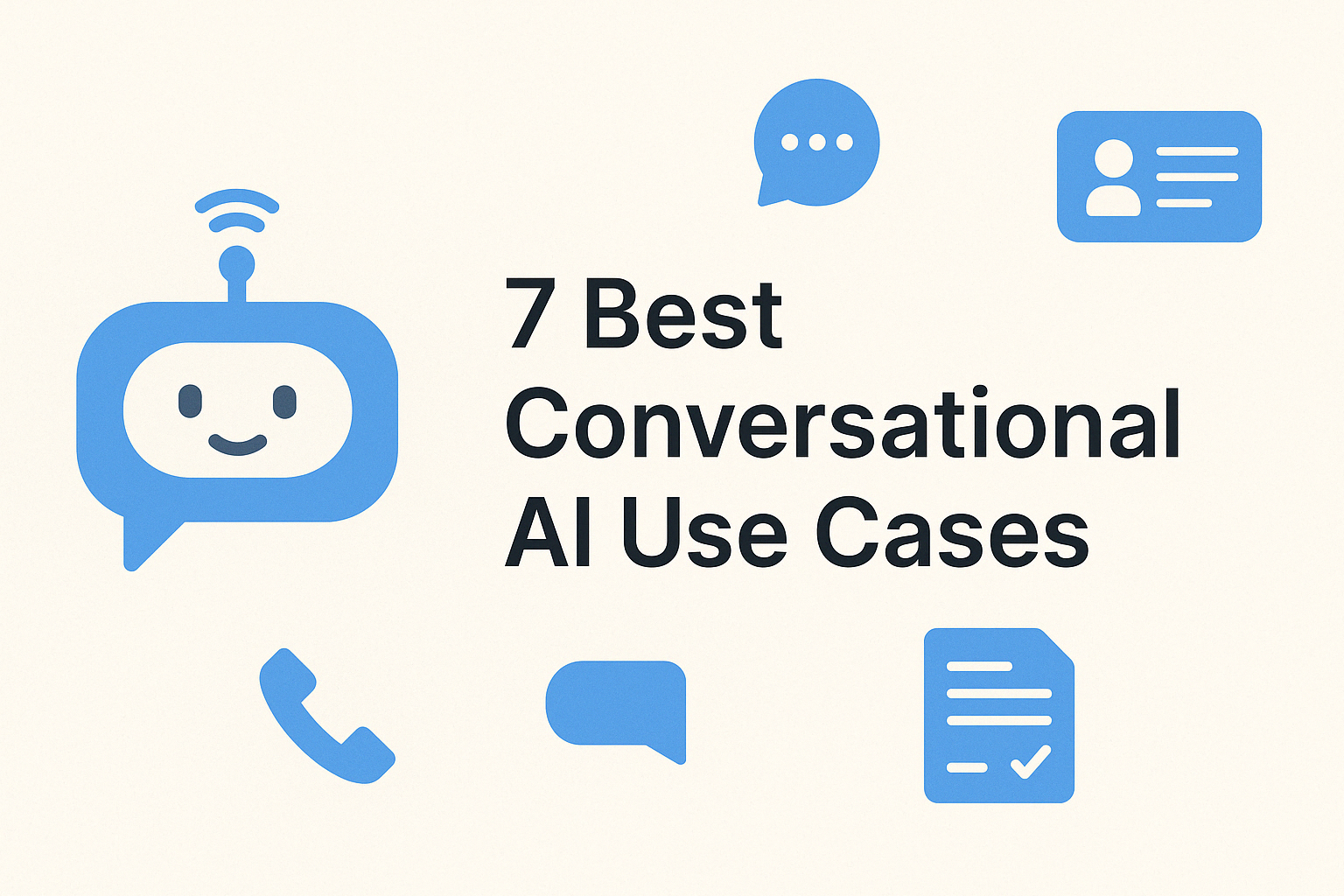Conversational AI is transforming how businesses interact, engage, and support their customers faster, smarter, and at scale. From automating support to boosting sales and guiding users in real-time, these AI-driven solutions are creating seamless experiences across industries.
In this blog, we’ll explore the best use cases of conversational AI that are already making a measurable impact. Whether you’re in retail, healthcare, finance, or tech, you’ll see how brands are using AI to save time, reduce costs, and build better customer relationships one conversation at a time.
What Is Conversational AI?

Conversational AI is a smart technology that allows machines to talk with people in a natural, human-like way. It uses tools like natural language processing (NLP), machine learning, and speech recognition to understand and respond to voice or text input.
You’ll find it in chatbots, voice assistants, and customer support tools. It can answer questions, solve problems, book appointments, and even carry on casual chats. Many businesses use conversational AI to save time and give quick support.
It learns from every conversation, which helps it get better over time. This makes the user experience smooth, friendly, and efficient across websites, apps, and smart devices.
7 Best Use Cases Of Conversational AI
1. Customer Support Automation
Customer Support Automation instantly manages repetitive tasks like answering FAQs, tracking order status, processing refunds, and basic troubleshooting without human involvement.
It reduces support costs by minimizing the need for live agents, improving response time, increasing resolution speed, and ensuring 24/7 availability, which lowers operational expenses and enhances customer satisfaction.
2. Lead Generation & Qualification
Conversational AI systems capture leads in real-time using interactive chat interfaces, engaging visitors the moment they land on your website or platform. These bots ask relevant questions, collect contact details, and understand user intent through natural dialogue.
Furthermore, they automatically qualify leads by assessing criteria such as budget, need, location, or timeline, ensuring only high-potential prospects are routed to sales teams. This reduces manual workload, improves response time, and increases conversion rates by allowing human agents to focus on sales-ready opportunities.
3. E-commerce Assistance
Conversational AI in e-commerce transforms how users interact with online stores by offering real-time, personalized support throughout the customer journey.
- Guides product discovery: Conversational AI helps users find products quickly by understanding intent and preferences through natural language queries. It filters options, shows availability, and even compares items in real time.
- Simplifies checkout process: AI chatbots guide users through cart management, shipping options, and payment steps, reducing cart abandonment rates.
- Provides personalized recommendations: Based on browsing history, past purchases, and preferences, AI suggests products that match user needs, boosting upsell and cross-sell opportunities.
- Supports multilingual and 24/7 interaction: AI enables global customer support without time-zone constraints, improving satisfaction and increasing conversions.
- Handles post-purchase support: From tracking orders to initiating returns or warranty claims, AI reduces workload on human agents and speeds up resolution.
4. HR & Employee Support
Conversational AI assists HR teams by handling routine queries, leave requests, and company policy explanations through instant, automated responses. It improves employee experience by providing 24/7 access to information like benefits, holidays, payroll, and code of conduct without the need for human intervention.
Additionally, it accelerates onboarding by guiding new hires through training modules, document submission, and internal tool navigation. This ensures consistency, saves HR time, and reduces the chances of human error in the onboarding process.
Furthermore, AI-driven HR support improves internal communication by quickly resolving repetitive concerns, allowing HR teams to focus on strategic planning, talent development, and employee engagement initiatives.
5. Banking & Financial Services
Conversational AI in banking and financial services automates customer interactions, improves response time, and enhances security.
It manages transactions like balance checks, fund transfers, and bill payments through chat or voice interfaces. It also resolves account-related queries 24/7 without human intervention, improving service availability.
Fraud alerts and suspicious activity detection are automated with real-time AI monitoring. It notifies users instantly, reducing risk and building trust.
6. Healthcare Support
Conversational AI in healthcare improves patient engagement and operational efficiency by automating key support functions.
It schedules appointments in real-time, allowing patients to choose available slots without waiting for human assistance. It also provides instant access to health information, such as symptoms, treatments, or medication guidelines, improving patient awareness. AI chatbots and voice assistants send automated reminders for upcoming consultations, prescriptions, or follow-ups, reducing no-show rates.
7. Multilingual Communication
Breaks language barriers with real-time translation – Multilingual AI systems can understand, translate, and respond in multiple languages instantly, enabling seamless communication between users from different linguistic backgrounds.
Expands global customer reach across regions – Businesses can interact with diverse audiences in their native languages, increasing engagement, trust, and conversion rates. This capability allows companies to serve international markets without the need for region-specific teams, reducing costs and enhancing scalability.
Improves customer experience and satisfaction – Customers receive support and information in the language they’re most comfortable with, leading to faster resolutions and better service quality.
Supports localization strategies effectively – Real-time multilingual capabilities help tailor content, ads, and user experiences for specific regions, driving better brand perception and local relevance.
Frequently Asked Questions (FAQs)
Common Misconceptions About Conversational AI?
Many people think conversational AI is only for customer support, but it also helps in sales, training, and marketing. It doesn’t replace humans; instead, it works with them to speed up tasks and improve service quality.
How To Choose The Right Conversational AI Solution?
Choosing the right conversational AI solution means checking if it works well with your tools, supports many languages, handles user load, and improves response time. Studies show AI boosts customer satisfaction by 25% and reduces support costs.
Future Trends In Conversational AI Technology?
Future trends in conversational AI technology include emotional intelligence, real-time multilingual conversations, hyper-personalization, and voice-based commerce. By 2026, 70% of customer interactions are expected to involve emerging technologies like AI-powered chatbots and voice assistants.
Conclusion
Conversational AI is solving one of the biggest business challenges today, scaling communication without losing human touch. From customer support and lead generation to onboarding and virtual assistants, the use cases are not just growing, they’re transforming industries.
These tools offer speed, personalization, and 24/7 efficiency that were once impossible. As AI continues to evolve, the question isn’t if your business should adopt it, but how fast? Start exploring the right use case for your brand today and lead the conversation of tomorrow.
